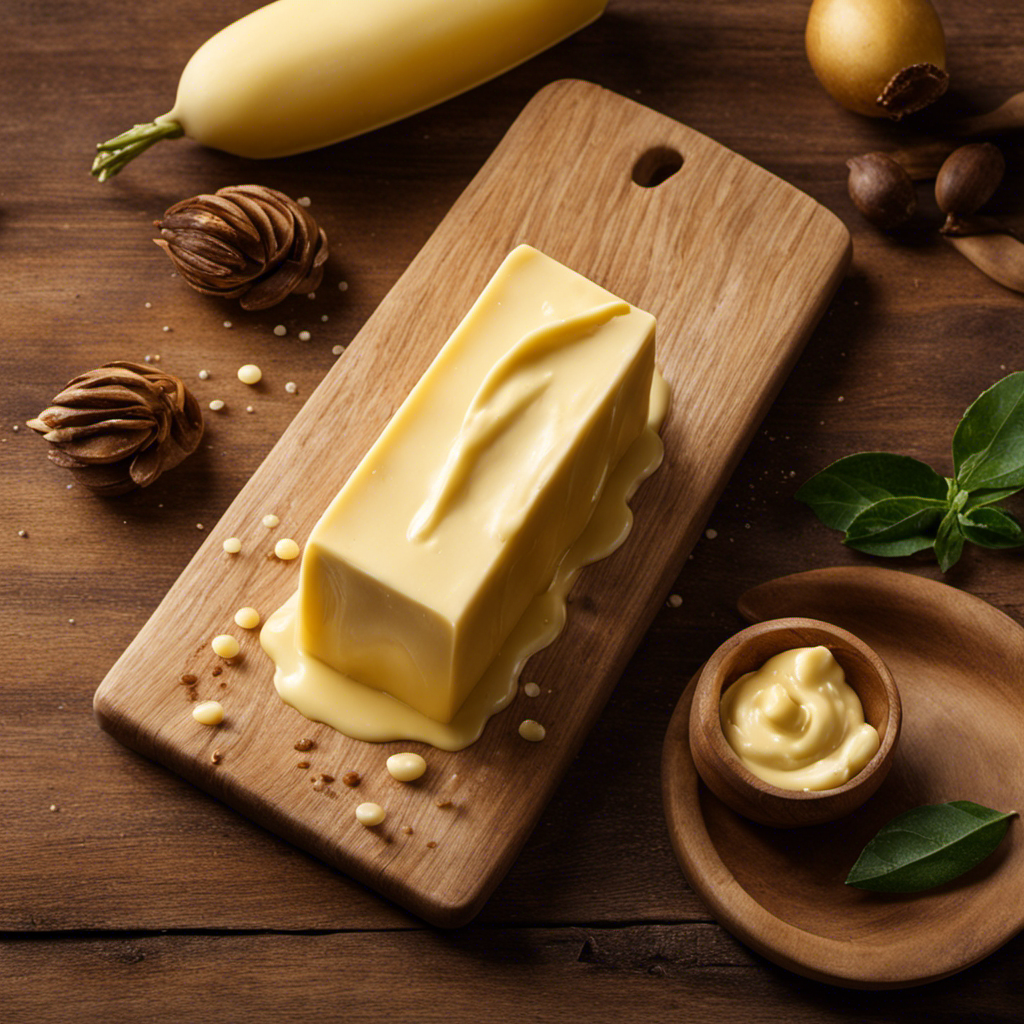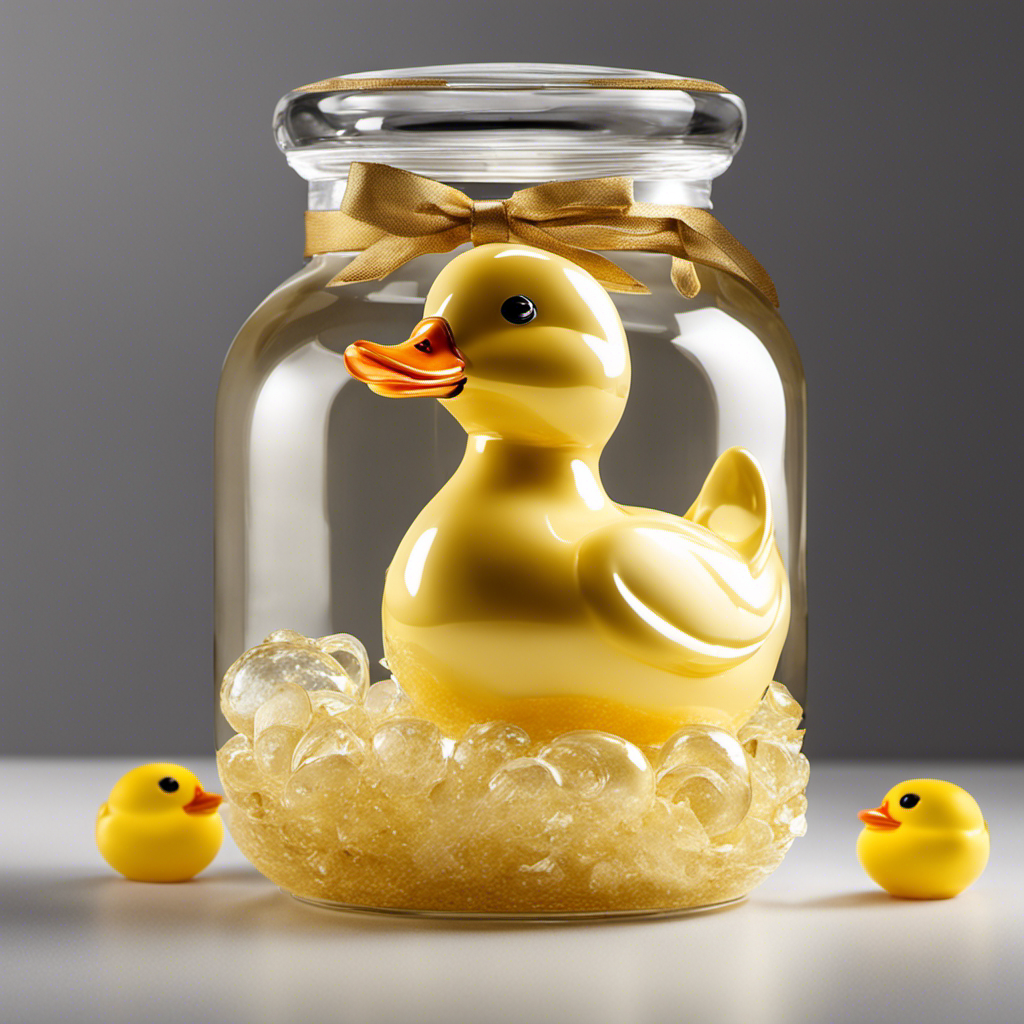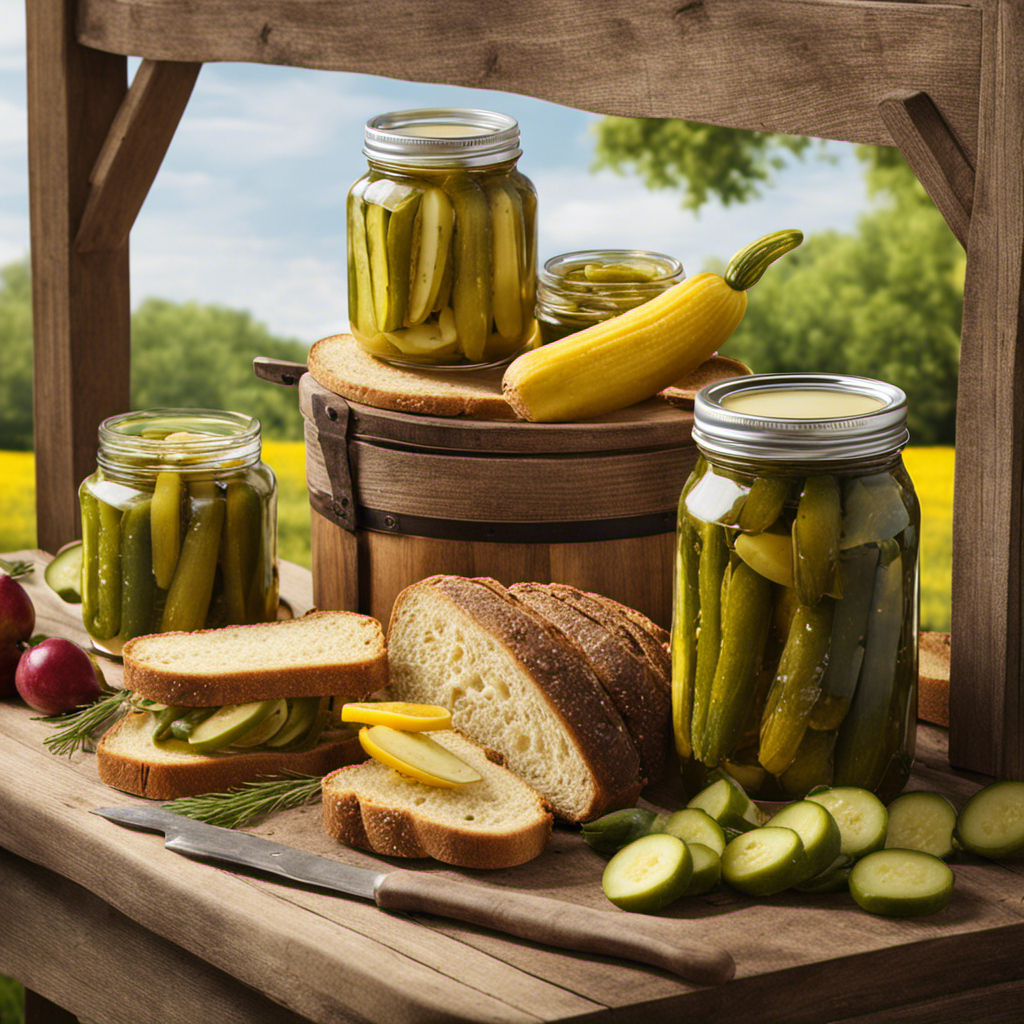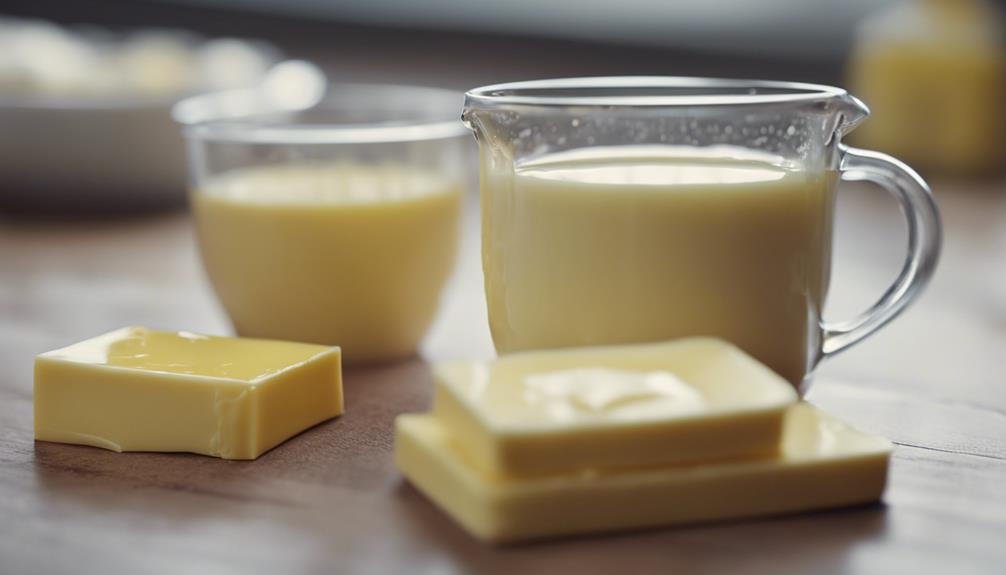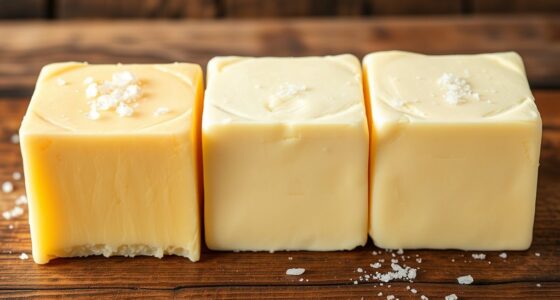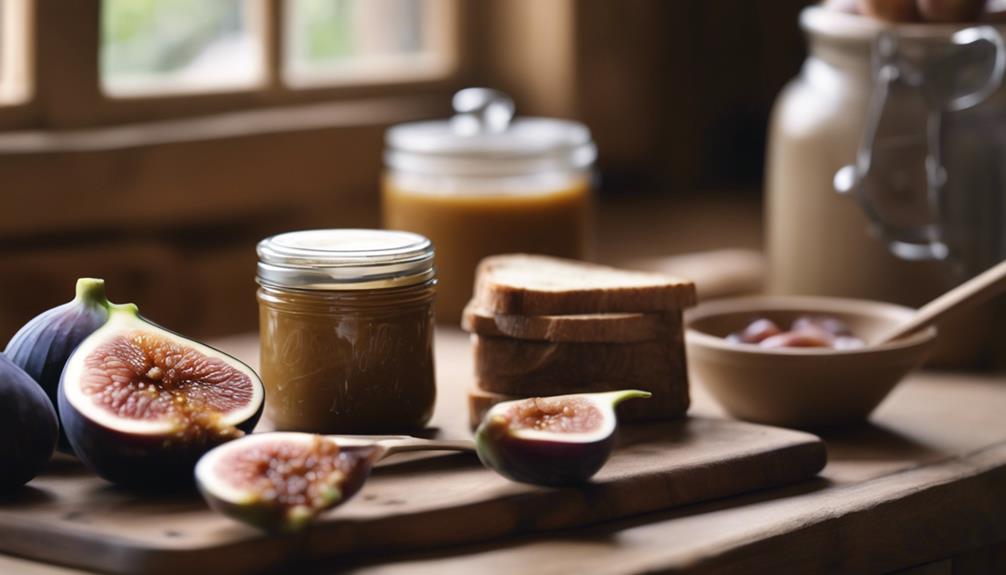As I spread the rich, golden butter on my warm toast, I can’t help but wonder: what makes Challenge Butter stand out from the rest?
Well, let me tell you. Challenge Butter has a rich history dating back to 1911, when it was first made by a group of California dairy farmers.
Using only the finest ingredients, this butter is crafted with love and care. With its irresistible taste and versatility, Challenge Butter is a staple in kitchens across the country.
Allow me to take you on a journey to discover the wonders of Challenge Butter.
Key Takeaways
- Challenge Butter was created in 1911 by a group of California dairy farmers to set a new standard for excellence in butter.
- Challenge Butter is made from high-quality, fresh cream sourced from local dairy farms and goes through a churning process to create smooth, velvety butter.
- Challenge Butter uses natural ingredients like cream and salt, avoiding artificial additives, preservatives, or chemicals.
- Challenge Butter offers a range of flavor profiles and packaging options, making it accessible and convenient for consumers.
History of Challenge Butter
The history of Challenge Butter dates back to the early 1900s. It all began in California when a group of dairy farmers came together to form the California Creamery Association. Their goal was to create a high-quality butter that could compete with the best in the market. They called it Challenge Butter because they wanted to challenge the status quo and set a new standard for excellence.
From the very beginning, Challenge Butter stood out for its rich, creamy texture and delicious flavor. Word quickly spread about this exceptional butter, and its popularity soared. Consumers loved its smoothness and how it melted effortlessly over warm bread or vegetables. Chefs and bakers also recognized its superior quality and started using it in their recipes.
Today, Challenge Butter continues to be a favorite among butter enthusiasts. Its origin story and commitment to excellence have made it a household name. Whether you’re spreading it on toast or using it in your favorite recipes, Challenge Butter is sure to deliver that unbeatable taste that has made it so beloved.
The Making of Challenge Butter
Making Challenge Butter involves a meticulous process. It begins with high-quality, fresh cream sourced from local dairy farms. The cream is pasteurized to ensure purity and safety.
Next, the cream is poured into large churns and the churning process begins. This step is crucial as it helps to separate the butterfat from the buttermilk. As the cream is churned, the fat molecules stick together, forming butter. The remaining liquid is drained off, leaving behind smooth, velvety butter.
The benefits of using Challenge Butter are numerous. Its rich, creamy texture enhances the flavor of any dish, from baked goods to savory recipes. It also spreads easily, making it perfect for toast or sandwiches.
Challenge Butter is a staple in many kitchens. Its superior taste and quality make it a favorite among chefs and home cooks alike.
Ingredients Used in Challenge Butter
When it comes to choosing ingredients for our food, one important consideration is whether they are natural or artificial. In this discussion, we will explore the differences between natural and artificial ingredients in the context of Challenge Butter.
Additionally, we will delve into the health benefits of butter and how it can be a nutritious addition to our diet. So, let’s dive in and discover the fascinating world of ingredients and the goodness that butter brings to the table!
Natural Vs. Artificial Ingredients
You can easily distinguish between natural and artificial ingredients in Challenge Butter. Natural ingredients are derived from nature and do not undergo extensive processing. They are generally considered healthier because they retain their nutritional value. Challenge Butter uses natural ingredients like cream and salt, which are rich in vitamins and minerals. On the other hand, artificial ingredients are man-made and often used to enhance flavor, texture, or shelf life. While they may provide some benefits, such as improving taste or reducing spoilage, they can also have drawbacks. Artificial ingredients may contain additives, preservatives, or chemicals that can be harmful if consumed in large quantities. It’s important to be aware of the presence of artificial ingredients and make informed choices about the foods we consume.
| Natural Ingredients | Artificial Ingredients |
|---|---|
| Cream | Artificial flavors |
| Salt | Preservatives |
| Artificial colors |
Health Benefits of Butter
To enjoy the health benefits of butter, it’s important to choose a brand that uses natural ingredients. While butter has been the subject of controversy in recent years, it actually offers several potential health benefits when consumed in moderation.
Butter is a rich source of vitamins A, D, E, and K, which are important for immune function, bone health, and antioxidant protection. Additionally, the saturated fats in butter can help promote satiety and support hormone production.
When it comes to cooking methods, butter is versatile and can be used for frying, sautéing, baking, and even as a flavorful spread. However, it’s crucial to avoid overheating butter, as it can burn and become less healthy.
Nutritional Value of Challenge Butter
The nutritional value of Challenge Butter is high in saturated fat and cholesterol. However, despite these concerns, there are still some nutritional benefits to be found. Here are some key points to consider:
-
Rich in Vitamins: Challenge Butter contains essential fat-soluble vitamins like vitamin A, D, E, and K, which are important for overall health.
-
Source of Energy: Butter is a concentrated source of calories and can provide a quick burst of energy when needed.
-
Enhances Flavor: Adding a pat of Challenge Butter to your dishes can enhance the taste and make them more enjoyable.
-
Aids in Nutrient Absorption: The presence of fat in butter helps the body absorb fat-soluble vitamins and other nutrients more effectively.
-
Contains Conjugated Linoleic Acid (CLA): CLA is a type of fatty acid found in butter that has been associated with various health benefits, including reduced risk of heart disease and improved weight management.
While Challenge Butter should be consumed in moderation due to its high saturated fat and cholesterol content, it can still be enjoyed as part of a balanced diet, thanks to these nutritional benefits.
Varieties of Challenge Butter
When it comes to the flavor profiles of Challenge Butter, you’ll find a range of options that cater to different tastes and preferences. From the rich and creamy taste of their traditional unsalted butter to the slightly tangy and savory notes of their European-style butter, there’s something for everyone.
As for packaging options, Challenge Butter offers their products in convenient stick form, making it easy to measure and use in your favorite recipes. And the best part? You can easily find Challenge Butter in stores nationwide, ensuring that you can enjoy its delicious flavors whenever you need them.
Flavor Profiles of Challenge Butter
Challenge Butter has a rich and creamy flavor that sets it apart from other brands. Its flavor profile is smooth and velvety, with a hint of sweetness and a touch of saltiness. This makes it incredibly versatile in a variety of cooking techniques.
Whether you’re sautéing vegetables, baking pastries, or simply spreading it on a warm slice of bread, Challenge Butter adds a delicious richness to every dish.
Here are five ways Challenge Butter can enhance your cooking experience:
-
Melting: Challenge Butter melts beautifully, creating a luscious base for sauces, gravies, and soups.
-
Baking: The creamy texture of Challenge Butter adds moisture and richness to cakes, cookies, and pies.
-
Sautéing: When melted in a hot pan, Challenge Butter adds a lovely golden color and nutty aroma to vegetables and proteins.
-
Spreading: The smooth consistency of Challenge Butter makes it perfect for spreading on toast, bagels, or cornbread.
-
Finishing: A pat of Challenge Butter can be the finishing touch to a perfectly cooked steak or a bowl of fluffy mashed potatoes.
With its unique flavor profile and versatile cooking techniques, Challenge Butter is a must-have ingredient in every kitchen.
Packaging Options Available
One option available for packaging Challenge Butter is a traditional stick format. The packaging design is simple yet effective, with a bright yellow wrapper that showcases the brand logo and name prominently.
The stick format makes it easy to measure and use the butter, whether you’re spreading it on toast or using it for baking. The packaging also includes important information such as the net weight and nutritional facts.
In line with sustainability initiatives, Challenge Butter is committed to using eco-friendly materials for their packaging. The stick format is made from recyclable paperboard, ensuring that it can be easily recycled after use.
Availability in Stores
After learning about the different packaging options available for Challenge Butter, let’s talk about its availability in stores. As a butter lover, I’m always on the lookout for this delicious and versatile product. Thankfully, Challenge Butter can be found in a wide range of stores, making it easily accessible for everyone. Whether I’m grocery shopping at my local supermarket or browsing through a specialty food store, I can always count on finding Challenge Butter on the shelves.
Here are some of the places where you can find Challenge Butter:
- Supermarkets
- Gourmet food stores
- Farmers markets
- Online grocery stores
- Club stores
Now that we know where to find Challenge Butter, let’s move on to exploring its health benefits and its various uses in cooking.
But first, let’s take a look at the benefits of using Challenge Butter.
Benefits of Using Challenge Butter
Using Challenge Butter can enhance the flavor and texture of your baked goods. Unlike artificial ingredients, Challenge Butter is made from all-natural ingredients, ensuring that you are using a high-quality product in your recipes.
Not only does it add a rich and creamy taste to your treats, but it also provides health benefits. Butter contains essential nutrients like vitamins A, D, and E, as well as beneficial fatty acids. These nutrients can support brain function, promote healthy skin, and aid in the absorption of other vitamins.
So, by using Challenge Butter in your baking, you not only improve the taste and texture of your creations, but you also add a nutritious component.
Now, let’s explore the various ways we can cook and bake with Challenge Butter.
Cooking and Baking With Challenge Butter
When cooking and baking, it’s important to consider the versatility and flavor that natural ingredients like Challenge Butter bring to your recipes. Challenge Butter is a high-quality butter made with real cream from cows not treated with the growth hormone rBST. It adds richness and depth to both sweet and savory dishes, elevating the overall taste and texture.
Here are a few cooking techniques and recipe ideas to make the most of Challenge Butter:
-
Sautéing: Melt Challenge Butter in a pan and use it as a delicious base for sautéing vegetables or meats.
-
Baking: Incorporate Challenge Butter into your favorite cookie, cake, or pastry recipes for a buttery and tender result.
-
Sauce making: Add a pat of Challenge Butter to create a smooth and velvety sauce, whether it’s a classic béarnaise or a simple lemon butter sauce.
-
Grilling: Brush melted Challenge Butter onto grilled vegetables or seafood for a delightful and flavorful finish.
-
Roasting: Rub softened Challenge Butter under the skin of a chicken before roasting to achieve a crispy and golden exterior.
Challenge Butter’s rich and creamy taste enhances the flavors of your dishes, making every bite a memorable experience.
Storing Challenge Butter
To keep your Challenge Butter fresh and flavorful, it’s best to store it in the refrigerator. This will help maintain its creamy texture and prevent it from going rancid. But how exactly should you store your butter to ensure its longevity? Here are the best ways to store Challenge Butter:
| Method | Description | Benefits |
|---|---|---|
| Butter Dish | Keep your butter on the counter in a covered dish or butter bell. | Easy access, soft and spreadable butter |
| Butter Keeper | Store your butter upside down in a water-filled base. | Keeps butter fresh for longer periods |
| Butter Crock | Place your butter in a crock and keep it in a cool, dark place. | Protects butter from air and light exposure |
| Butter Wrap | Wrap your butter tightly in parchment paper or foil. | Preserves freshness and prevents absorption of odors |
Comparing Challenge Butter to Other Brands
When it comes to comparing Challenge Butter to other brands, there are three key points that stand out: taste and texture, ingredients and sourcing, and price and availability.
As a butter enthusiast, I have tried several brands and can attest to the fact that Challenge Butter has a rich and creamy taste, with a smooth and velvety texture that melts effortlessly.
In terms of ingredients and sourcing, Challenge Butter takes pride in using only the finest and freshest cream from cows that are raised without the use of hormones.
Lastly, while Challenge Butter may be slightly higher in price compared to other brands, its availability in most grocery stores makes it convenient for anyone looking to elevate their culinary experience.
Taste and Texture
The taste and texture of Challenge Butter make it a favorite among chefs and home cooks alike.
- Rich and creamy flavor that enhances the taste of any dish.
- Smooth and velvety texture that spreads effortlessly.
- Perfect balance of saltiness, adding depth to every bite.
- Unmistakable freshness that guarantees quality and satisfaction.
- Versatile for both cooking and baking, ensuring delicious results every time.
With its exceptional taste preferences and customer satisfaction, it’s no wonder Challenge Butter is a staple in kitchens across the country. Whether I’m sautéing vegetables, whipping up a batch of cookies, or simply spreading it on warm toast, the flavor and texture never disappoint. The butter’s richness elevates the simplest of dishes, making them truly memorable. It’s the secret ingredient that adds that extra layer of indulgence to my cooking.
As I explore the world of Challenge Butter, the next natural step is to dive into its ingredients and sourcing, to understand what makes it so unique and desirable.
Ingredients and Sourcing
As you explore the world of this delectable product, you’ll discover the carefully selected ingredients and meticulous sourcing that contribute to its unique and desirable qualities. Challenge Butter goes above and beyond to ensure that only the finest ingredients make it into their products. They face numerous sourcing challenges, but their commitment to quality never wavers. From the rich, creamy milk sourced from local dairy farms to the pure sea salt sourced from sustainable salt mines, every ingredient is chosen with care. The table below provides a glimpse into the sourcing process and the environmental impact of Challenge Butter.
| Ingredient | Source | Environmental Impact |
|---|---|---|
| Fresh Cream | Local Dairy Farms | Low |
| Sea Salt | Sustainable Salt Mines | Minimal |
| Natural Flavor | Organic Farms | Negligible |
| Annatto Extract | Responsible Suppliers | Negligible |
| Lactic Acid | Fermentation Process | Low |
Price and Availability
You can easily find this remarkable butter at a reasonable price in many grocery stores. Challenge Butter has become a staple in my kitchen because of its exceptional quality and taste. Here are a few reasons why it’s worth every penny:
- Made from the freshest cream, giving it a rich and creamy texture.
- The flavor is unparalleled, adding a delicious richness to any dish.
- It spreads effortlessly, making it perfect for toast or sandwiches.
- It is versatile and can be used in both sweet and savory recipes.
- Challenge Butter is widely available in grocery stores, ensuring easy access.
If you prefer the convenience of online ordering, many retailers offer Challenge Butter at competitive prices. With just a few clicks, you can have this delectable butter delivered right to your doorstep.
Now that you know where to find Challenge Butter, let’s explore how it can elevate your favorite recipes and dishes.
Challenge Butter in Recipes and Dishes
Challenge Butter adds a rich and creamy flavor to your favorite recipes and dishes. Whether you’re sautéing vegetables, baking cookies, or making a flaky pie crust, this butter is the perfect ingredient to elevate your cooking.
The high butterfat content in Challenge Butter ensures a smooth and velvety texture, while its sweet and slightly salty taste enhances the flavors of your dishes. It’s also versatile, allowing you to experiment with different cooking techniques and recipe ideas. From melting it over pancakes to using it in a sauce for pasta, the options are endless.
Challenge Butter brings a touch of luxury to your meals, making them irresistible to your taste buds. So, where can you buy this culinary treasure? Let’s find out in the next section.
Where to Buy Challenge Butter
After learning about the versatility of Challenge Butter in various recipes and dishes, you may be wondering where you can purchase this exceptional ingredient. Well, I have good news! Challenge Butter is readily available in both physical grocery stores and online platforms, making it convenient for anyone to get their hands on this high-quality product.
Here are some key details about the availability of Challenge Butter:
-
Online Grocery Stores: Challenge Butter can be easily found and purchased on popular online grocery platforms. With just a few clicks, you can have this delicious butter delivered right to your doorstep.
-
Nationwide Retailers: Challenge Butter is widely distributed and can be found in many grocery stores across the country. Simply visit your nearest supermarket and look for the distinctive Challenge Butter packaging.
-
Local Specialty Stores: In addition to larger retailers, Challenge Butter is often stocked in local specialty stores that focus on providing premium ingredients to culinary enthusiasts.
-
Farmer’s Markets: For those who prefer a more personal touch, you may even find Challenge Butter at your local farmer’s market. This allows you to support local producers while enjoying the benefits of this exceptional butter.
-
Direct from the Manufacturer: Lastly, you can also purchase Challenge Butter directly from the manufacturer’s website. This ensures that you’re getting the freshest product and allows you to explore other products offered by Challenge Dairy.
Now that you know where to buy Challenge Butter, you can easily enjoy the benefits of using this superior ingredient in your cooking. So go ahead, elevate your culinary creations with the rich and creamy goodness of Challenge Butter!
Frequently Asked Questions
Is Challenge Butter Suitable for Those With Lactose Intolerance or Dairy Allergies?
Challenge butter is suitable for those with lactose intolerance or dairy allergies. It is a great option compared to other lactose-free butter alternatives. Additionally, it provides nutritional benefits for lactose intolerant individuals, making it a healthier choice.
Does Challenge Butter Contain Any Artificial Additives or Preservatives?
No, Challenge Butter does not contain any artificial additives or preservatives. It’s made with only two natural ingredients: cream and salt. This ensures a pure and flavorful butter that you can enjoy without any artificial ingredients.
Can Challenge Butter Be Used as a Substitute for Other Cooking Fats, Such as Vegetable Oil or Margarine?
Using Challenge Butter in various recipes, like frying or sautéing, is a great way to add flavor. It can also be a healthier substitute for other cooking fats, providing a rich taste without artificial additives.
Is Challenge Butter Produced From Grass-Fed Cows?
Yes, Challenge Butter is produced from grass-fed cows. Grass-fed dairy products, like Challenge Butter, are believed to have nutritional benefits compared to those from grain-fed cows. Grass-fed is generally considered better for dairy production.
Are There Any Special Tips or Techniques for Incorporating Challenge Butter Into Baking Recipes?
Incorporating Challenge Butter into your baking recipes is like adding a secret ingredient that elevates the taste and texture. To properly incorporate it, make sure the butter is softened and at room temperature for easier mixing. Happy baking!
Conclusion
In conclusion, Challenge Butter is a creamy delight that adds a touch of magic to every dish.
With its rich history and carefully selected ingredients, it stands tall among other brands.
Whether you’re spreading it on warm toast or using it to whip up a decadent dessert, Challenge Butter never fails to impress.
So, don’t hesitate to indulge in this golden treasure.
Get your hands on Challenge Butter and let its velvety smoothness dance on your taste buds.
